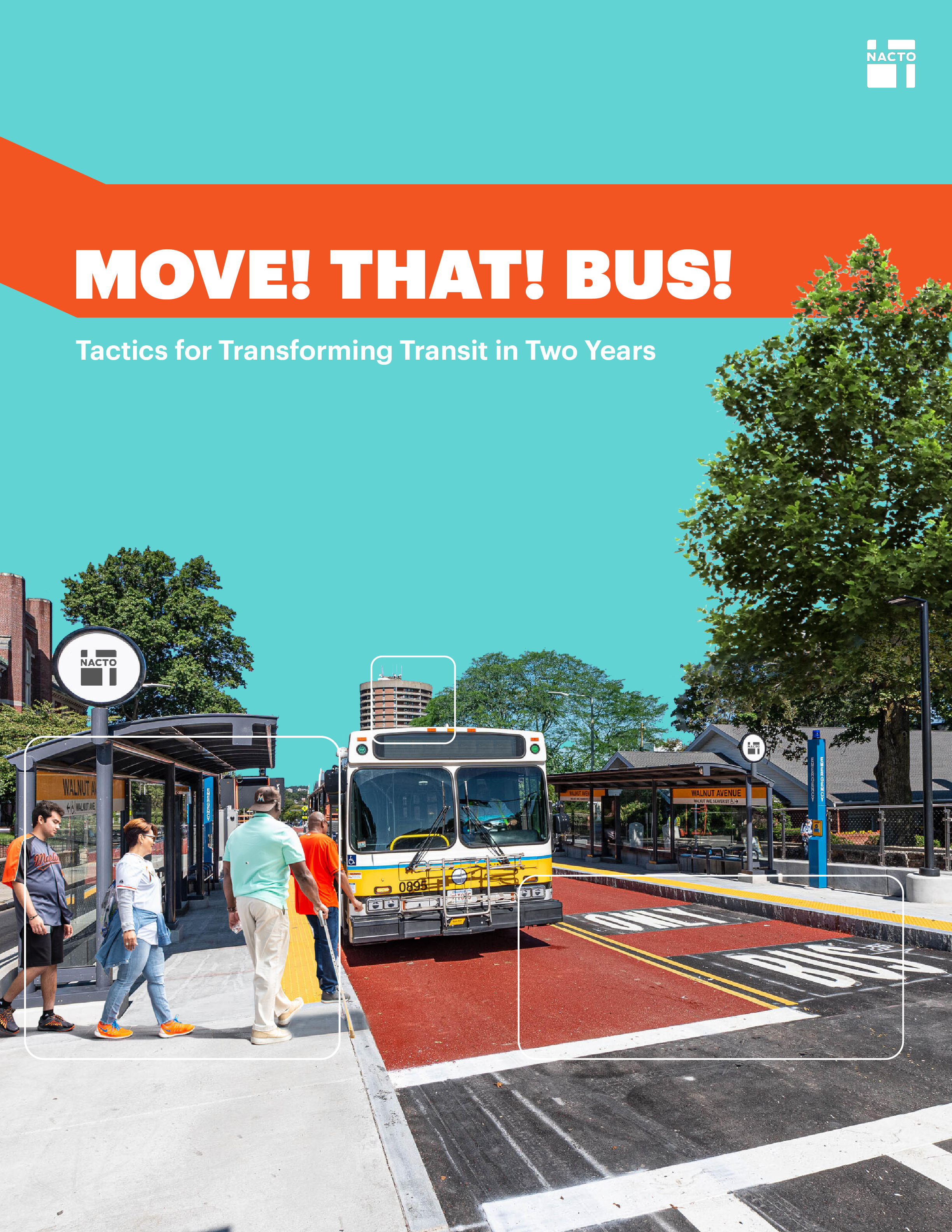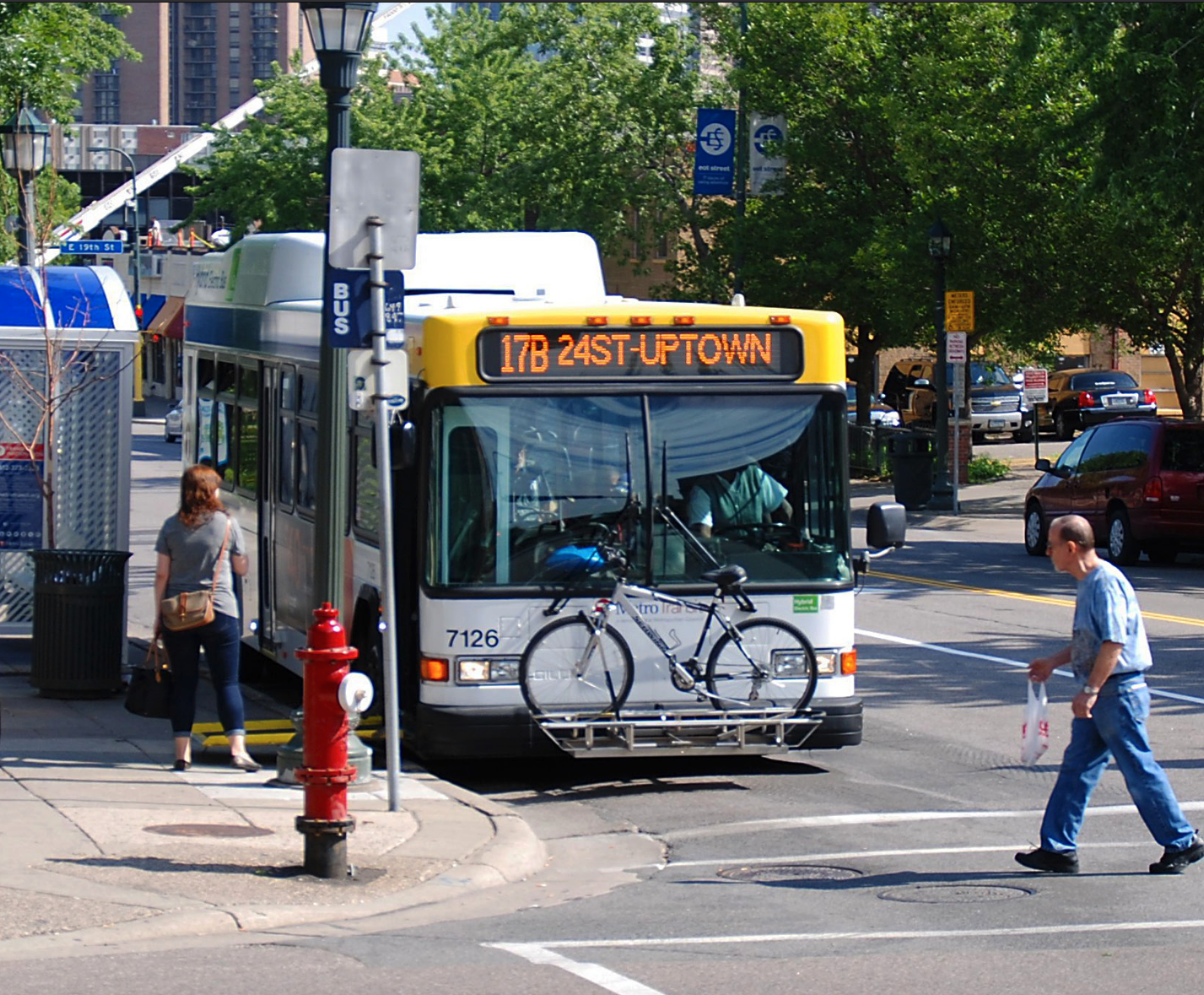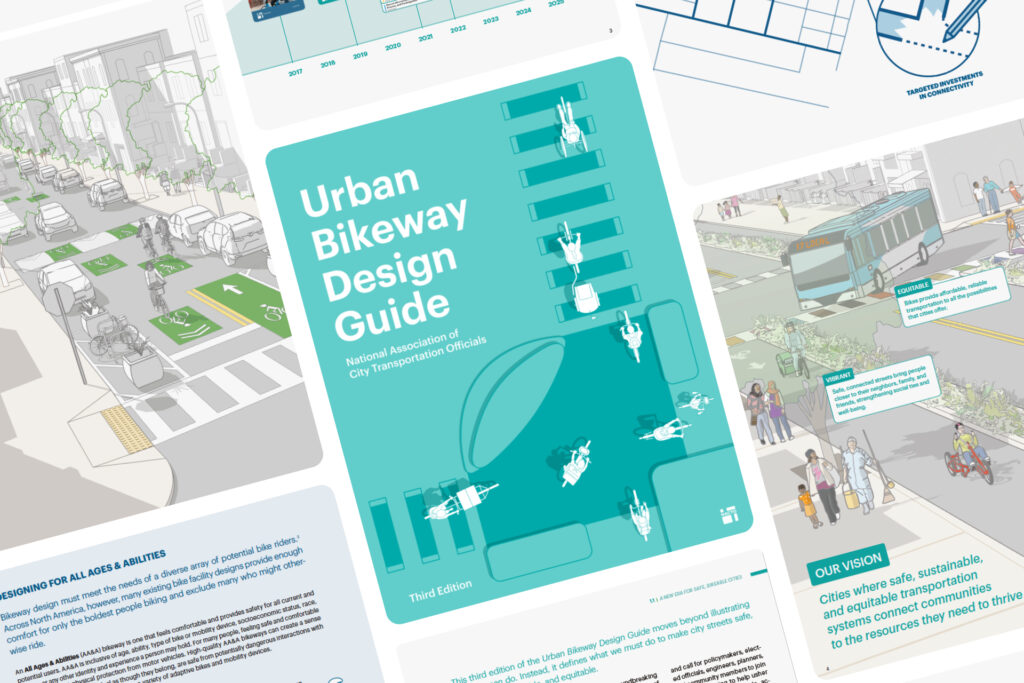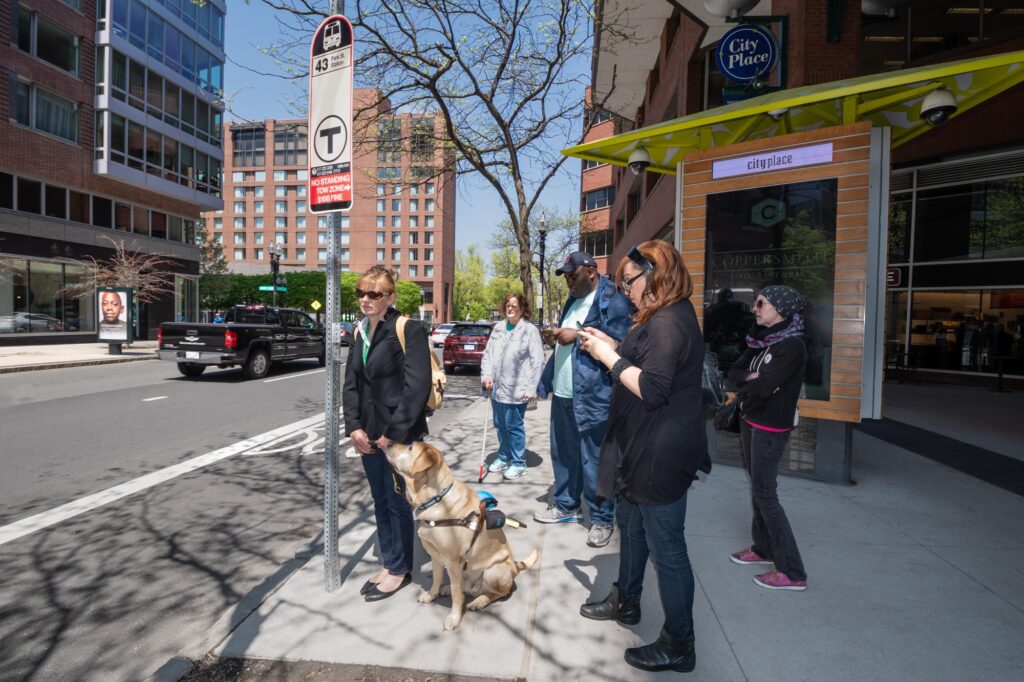The report offers strategies and best practices for cities to transform bus service in two years.

The National Association of City Transportation Officials (NACTO) published a new report today that argues the city bus is the most powerful tool local leaders have to mitigate the impact of catastrophic climate change. The report, entitled “Move! That! Bus! Tactics for Transforming Transit in Two Years,” offers decision-makers an action plan for quickly and affordably improving bus service and reducing transportation-related emissions.
The new report was informed by recent research from the UN’s Intergovernmental Panel on Climate Change, which finds public officials have less than three years to avert the worst effects of climate change. In the U.S., the transportation sector is responsible for the greatest share of greenhouse gas emissions–and people traveling in private cars, trucks, and SUVs make up more than half of transportation emissions in the country.
Today, barely half of Americans live within walking distance to transit, and less than 10% live within walking distance to transit service frequent enough that it might allow them to live without a private car. A single bus can carry up to eight times more people than a personal car, reducing emissions by up to 82% per trip. More than half of all trips in the U.S. are less than five miles; with targeted service, speed, and reliability improvements, NACTO’s report finds, these short trips can be taken by bus at a fraction of the price of driving.
The report surveys best practices from cities across North America, and calls on decision-makers to commit to three actions to modernize bus service, increase reliability and accessibility, and bring in new riders:
- Offer frequent, all-day bus service by shifting schedules to increase frequency throughout the day, redesigning bus networks to expand access to jobs and destinations, and making strategic investments to improve reliability
- Redesign streets to prioritize buses by installing bus lanes, fixing pain points at intersections, retiming signals, rebalancing bus stops; and improving walking, biking, and rolling connections.
- Adopt local policy reforms that support transit like parking and zoning reforms; designating curb space for uses other than private parking; and disincentivizing private car usage in dense urban areas.
The improvements to bus service outlined in the report are designed to be implemented quickly—in less than two years—and produce immediate increases in bus ridership, as well as related safety, equity, and reliability benefits. Nearly all of the recommendations can be implemented by local governments and leaders, without significant federal policy changes.
“The best climate solution is one that millions of people take every day–the city bus,” said Corinne Kisner, Executive Director of NACTO. “By implementing the proven bus improvements and policy reforms outlined in our report, cities and transit agencies can reduce greenhouse gas emissions and fight climate change, while simultaneously building more equitable and accessible transportation networks–fast. Leaders at all levels must focus the full weight of their authority on this crucial effort. There is no time to waste.”
“By acting at the local level, cities have the power to create transformational change on a global scale,” said Janette Sadik-Khan, NACTO Chair. “High-quality bus service is the foundation for a more sustainable and equitable future. The opportunity is there: local leaders simply have to take it.”
“As New York City reimagines public space, we are working closely with our own MTA on behalf of bus riders, with Mayor Eric Adams promising to bring bus priority to a historic 150 miles of streets in just his first term,” said New York City Transportation Commissioner Ydanis Rodriguez. “As buses largely transport our country’s working class, NACTO deserves enormous credit for a new report that recognizes the need for a national approach that uses many of the tools we have already seen work here, from red bus-priority lanes to new camera and signal technologies that prioritize buses. Together, these changes are making bus service faster, more reliable, and more popular.”
“Here in Metro Vancouver, we’ve learned that simple, low-cost changes to our streets can have a huge impact on the lives of bus riders,” said Daniel Freeman, Senior Manager for Bus Priority Programs at TransLink. “By working with our municipal partners to improve bus service through dedicated bus lanes, signal priority, and more direct and reliable service, we’re bringing our region closer to reaching its climate, equity, and accessibility goals. Ultimately, by prioritizing buses, we’re prioritizing people.”
“Investments in public transit not only manage traffic congestion, but are invaluable to achieving our shared equity, public health, and environmental goals,” said Gina Fiandaca, Assistant City Manager of the City of Austin.
“Move! That! Bus! reminds us that we can solve big transportation and climate problems at the local level, and we can start by making improvements to the bus,” said David Bragdon, Executive Director of TransitCenter. “The report highlights the key tools cities have at their disposal for unlocking access to frequent, fast, and reliable bus service, and outlines how these tools can make a big impact in a matter of months. We’ve got great news for local officials: By following this step-by-step guide for getting buses moving, you can be the climate heroes we so desperately need.”
“Avoiding the worst impacts of climate change while improving equity and safety will require transformative investments in frequent bus service and transit infrastructure in communities nationwide,” said Zak Accuardi, a transportation advocate at NRDC (Natural Resources Defense Council). “This report highlights how cities and transit agencies have already started making these investments, and demonstrates how to accelerate progress in order to reduce pollution and improve transportation access for all.”
“Improved bus service is essential for our communities and the country,” said LeeAnn Hall, Executive Director of Just Strategy. “It will increase access to work, education, and social services; while growing the economy, and helping achieve our racial equity and climate goals.”
###
About the National Association of City Transportation Officials (NACTO)
NACTO is an association of 90 major North American cities and transit agencies formed to exchange transportation ideas, insights, and practices and cooperatively approach national transportation issues. The organization’s mission is to build cities as places for people, with safe, sustainable, accessible, and equitable transportation choices that support a strong economy and vibrant quality of life. To learn more, visit NACTO.org or follow us on Twitter at @NACTO and Instagram at @NACTOcities.
Press Contact
Alex Engel | [email protected]
Billy Richling | [email protected]
For Immediate Release
August 18th, 2022



